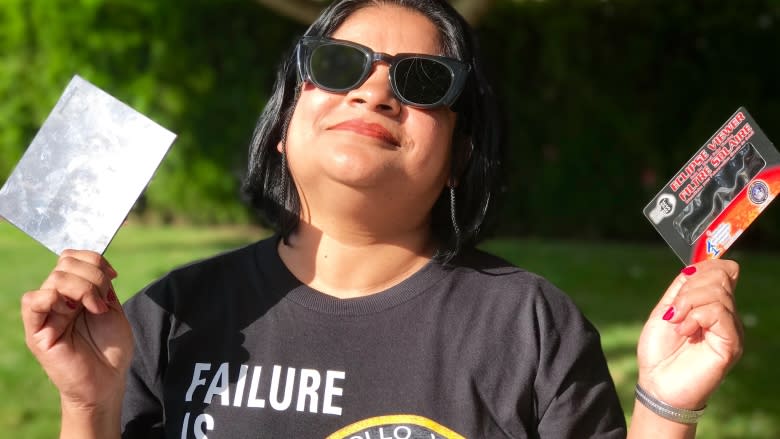While millions watch the eclipse from Earth, NASA observes from the sky
Sharmin Chowdhury isn't messing around, not when she's waited almost her whole life for this. She brought three different devices to protect her eyes as she watches what's been dubbed the "Great American Eclipse."
"I definitely wanted to experience one totality in my life," she says. "It's on my bucket list."
This eclipse technically won't be her first, though. As a child she observed a total eclipse from her grandmother's home in Bangladesh, where 'grandma' set up a bowl of water in the courtyard.
"We watched the eclipse through the reflection of the water," Chowdhury says. "The story we were told by our grandma at that point was a monster will come, eat up the sun, and then we'll have to ask the monster to give it back," she says, smiling.
Her understanding of the science is somewhat more sophisticated now as a member of the Royal Astronomical Society of Canada. Chowdhury travelled from Toronto to Salem, Ore., to be among the first to see the total eclipse as it traverses the sky above the U.S. Not only is she excited to hear the observations of experts leading her astronomical tour, but also about the kinds of scientific discoveries made possible by such a relatively rare event.
While Chowdhury and close to one million other sky gazers flock to Oregon to watch the eclipse from Earth, somewhere overhead a customized NASA research aircraft will by flying over the state. Scientists aboard will travel along the eclipse's path to study the solar corona, the aura of plasma that envelops stars.
According to NASA researcher Marco Velli, the sun's corona becomes most clearly visible during a total eclipse.
"This eclipse is really a once-in-a-lifetime chance to study high contrast images of the solar corona, explore its dynamics, how it changes in time," Velli says.
'What makes the corona so hot?'
Why is the corona so interesting? Because it's the most mysterious part of the sun. That's one of the main reasons why NASA will be sending the Parker Solar Probe to the surface of the sun next July, the first attempt of its kind. Velli is part of the team that will be trying to solve a mystery of the corona that has stumped scientists for decades.
"Its temperature is up at two million degrees (Celsius) even though the photosphere below it is only a few thousand degrees. So the question is, what makes the corona so hot? And as a consequence, we have a solar wind and the solar wind causes things like space weather events and geomagnetic storms," Velli says.
"And we really need to know more about our space environment, especially now that we're a technological society that relies on satellites."
This field of research isn't simply to satisfy scientific curiosity. In 1989, a solar flare caused a massive power outage in Quebec. This research could help scientists better understand, and eventually predict solar weather, which affects not only satellites in space but also the Earth's climate.
"So we really need to understand the solar wind and the solar corona and the magnetic fields because in some sense our future depends on it, as well as our present," he explains.
However on Monday morning, Velli says, the eclipse will also form a unique link to the past. Eclipses were once thought to be messages of doom, until ancient scholars developed a better understanding of astronomy.
"Eclipses were in fact one of the motivating factors for the birth of science," Velli says. "Because once the Babylonians and then the Greeks — Thales, one of the so-called 'Seven Sages of Greece' — managed to predict an eclipse. He showed that humans had the capacity to understand even this incredible natural phenomenon."
A solar eclipse can cook your eyes. Watch our video below on how to watch safely:



